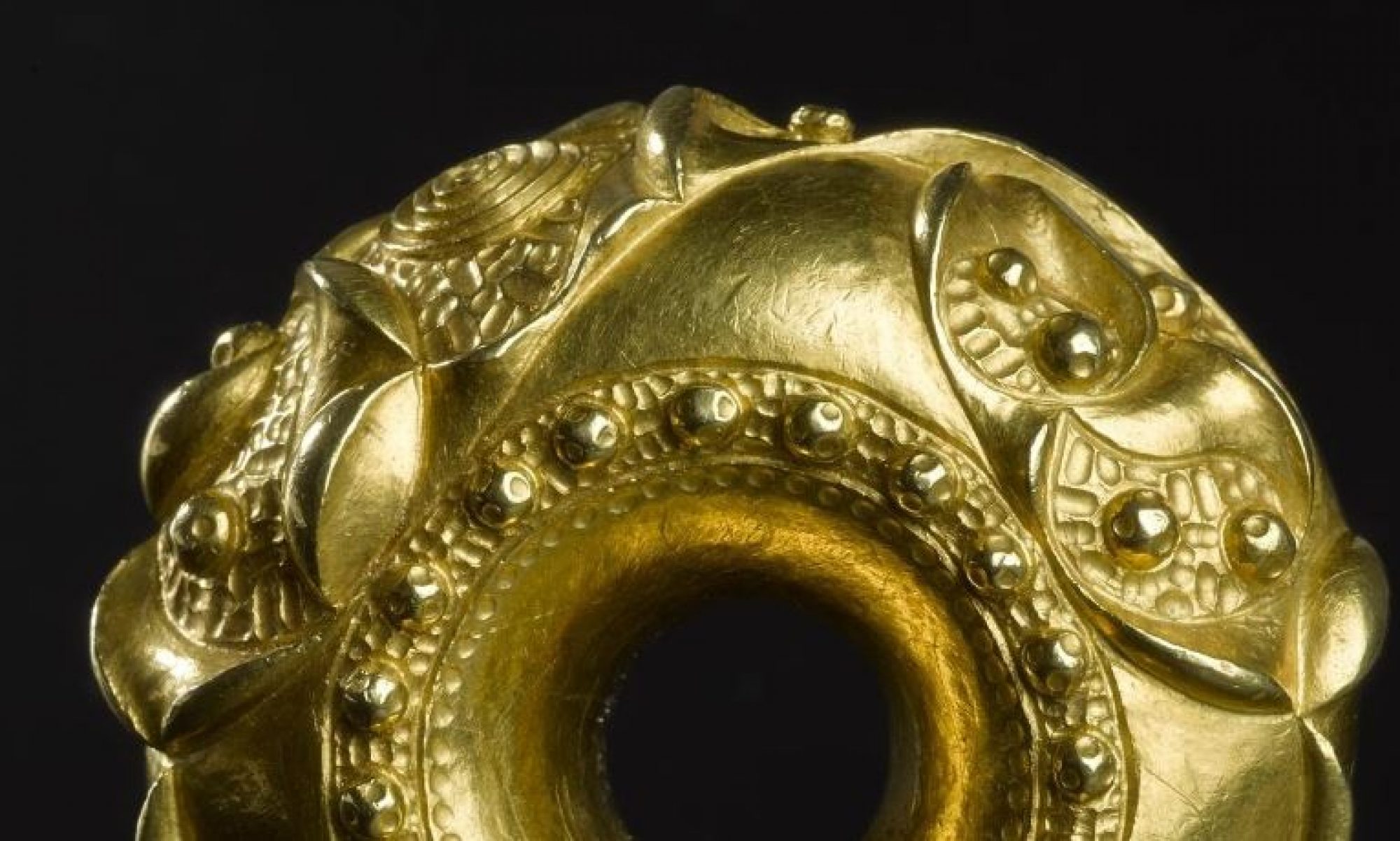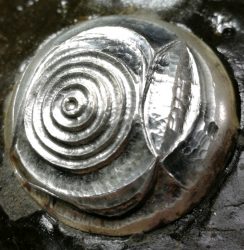Firstly, a bit of a catch up! Thank you to the 150+ folks who’ve read the blogs so far, and to those who’ve subscribed to read more (remember to hit ‘Subscribe’ at the bottom of the page, if you want to be one of them).
A couple of comments from the Shenstone blog have come in: several folks thought that it was a real shame we can’t look at this torc and, yes, it really is. There’s a lot you can tell from an up-close look, the least of which is how it was broken, and what exactly the ring stamp on it could tell us (several torcs of this type, even ones from Europe, have such a mark – is it a maker’s mark??).
But anyway…
For today’s blog I wanted to look at the Glascote torc: a gold torc of the type that most people would think of if asked to imagine a gold torc. This torc has quite a story (…and some of the best media headline punning ever!).

I need to admit that prior to writing this I did already know quite a lot about this torc: this is one of the handful of complete, ornate and reasonably well documented torcs from the UK and – as a gold torc specialist – it would be a bit odd if after 8 years of doing this, I didn’t have a pretty good knowledge of the best ones!!! So yes, the usual ‘rummaging about for information’ process won’t apply for this one, as I already have the relevant publications and photos to hand.
This torc was fully published in the Transactions of the Staffordshire Archaeological and Historical Society in 1969. According to this account, the torc was ‘was found about 1943 by Mr. S. G. Bates and Mr. G. E. Croshaw, who were employed in a boat-building yard by the Coventry Canal between Glascote and Amington, about half a mile south of Tamworth’. As is so often the case with early torc finds (see here for what happened to the first Snettisham torcs when they were found in 1948…), the boat-builders did not recognise the importance of their find, thought it was a coffin handle – and, after washing it under a tap – Sidney Bates sent it to his head office in Birmingham, who weren’t interested, sent it back …and told Sidney he should keep it as a souvenir! Luckily, rather than throw it away or sell it, he did just that.
Then between 1968 and 1970, a collection of six gold torcs were found in Ipswich, Suffolk. The publication of the first five torcs in 1968 in the journal Antiquity – and the subsequent coverage in the national press and on TV – caught the eye of Grace Bates, Sidney’s wife. Thankfully, Grace (hurrah for Grace!!) recognised the similarity of the Ipswich examples to the object now sat in her wardrobe. Sidney subsequently wrote to Elizabeth Owles, Assistant Curator at Ipswich Museum, who had written up the original five Ipswich torcs, prior to the finding of the sixth torc in 1970. Elizabeth Owles confirmed that Grace had been right all along: it was an Iron Age torc!
The torc was then declared Treasure Trove and, with Tamworth not having a suitable museum to display it, the torc was transferred to the Birmingham Museum & Art Gallery, where it is still on display today. However, Tamworth would very much like the torc to be returned to them and several recent articles ‘Stone me, it’s good to torc!’ and ‘RELIC IS THE TORC OF THE TOWN; Tamworth wants its treasure back’ are testament to the continued local interest in this precious artefact.
Not content with wanting it back, the Tamworth residents have gone one better and, in a move not seen since Snettisham added torcs to their village sign, decided to name not only a college after the torc, but also two roads, ‘Torc Avenue’ and ‘Treasure Close’! Tamworth, I salute you!



Anyway, back to the torc itself: we’ve got a good location from the Transactions of the Staffordshire Archaeological and Historical Society paper, and I’ve got a handful of decent photos. The torc itself is described as being c.180mm in diameter which makes it a neck torc (some torcs appear to have been made for upper arm or wrist, but not this one) and from photos, I can see that the torc is made from a number of wires (from the report – although again, I’d like to see it myself to be certain – 12 wires twisted into 6 pairs, which have then been coiled around some kind of former, now lost or removed at the time of making).
The terminals have then been overcast (molten metal has been poured into a mould over the wire ends to create solid terminals which link the wires), and decorated with a rick-rack/wavy line design created by alternately punching dots on each side of a raised straight line of gold. The gold percentage is surprisingly low at around 29% gold (the rest being the standard silver and copper found in such ternary – three-part – alloys which are so typical of Iron Age gold).
The torc is also damaged in two places: on the neck ring (reported to be damage done during the finding of the torc) and some loose wires around the terminals (explained as resulting from a problem during the manufacture of the torc).
Initial thoughts:
- Oh, this is a nice torc! I’m intrigued by the very well achieved wire neck ring, which I think I’ve seen elsewhere (more to come of that later…)
- The rick-rack decoration has definite parallels with other torcs from beyond Staffordshire, the Snettisham Great torc being the most well known.
- This torc is one of two ‘cushion’ (more about them here) terminal torcs – the other being the Needwood Forest torc – which form the basis of an established theory that ‘cushion’ torcs originate in the Staffordshire region. I remain unconvinced of this…
- Can I move to Torc Avenue, please?
Anyway, enough of thoughts of my dream home. I’ll be back soon with another blog, about the Middleton Hall torc (which I’ve recently been told is actually just within Warwickshire – I’m not sure ‘The Staffordshire and Warwickshire Torc Odyssey’ has quite the same punchy ring to it, and I’m sure the Iron Age people wouldn’t have cared, so we’ll stick with what we’ve got for now…)
As ever, if you want to be notified each time a new post comes out, please click ‘Subscribe’ below.
Until then, keep torcing!



2 Replies to “The Staffordshire Torc Odyssey: 4 Glascote”